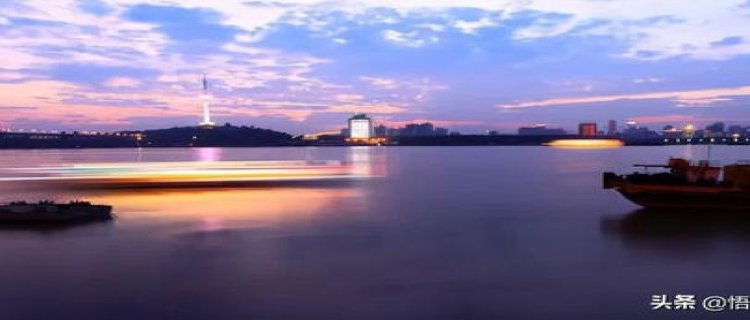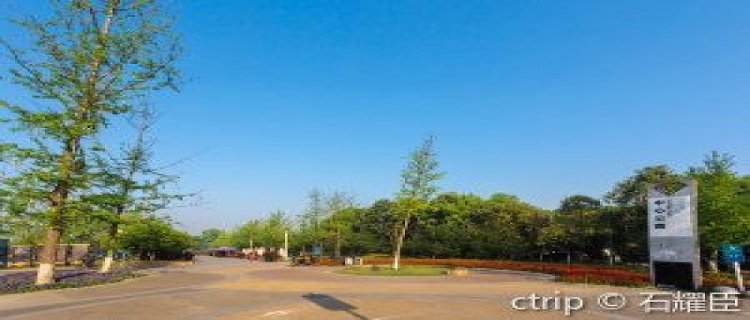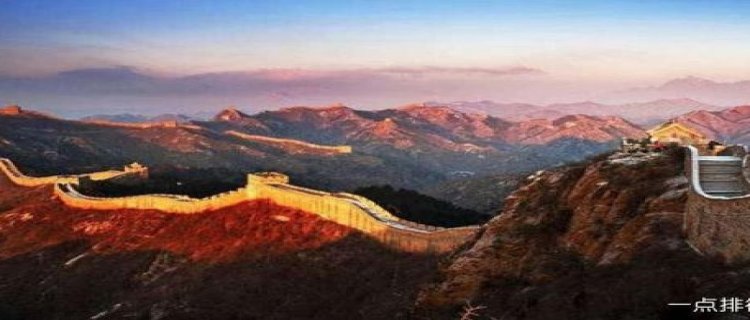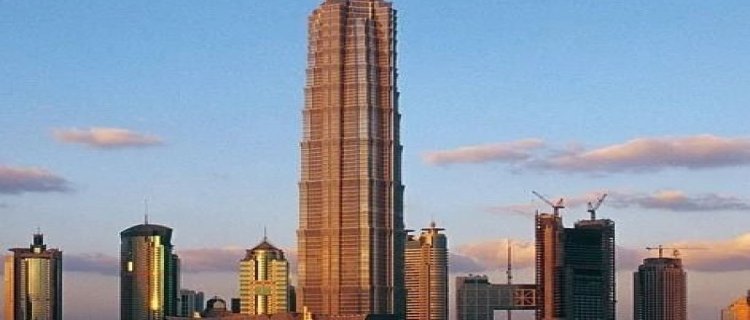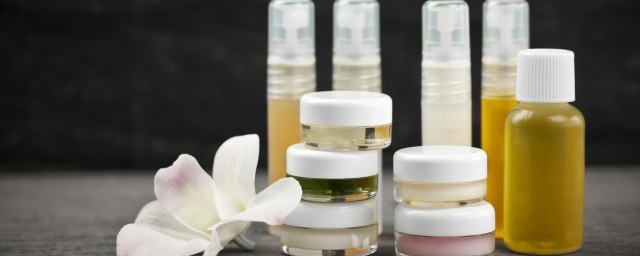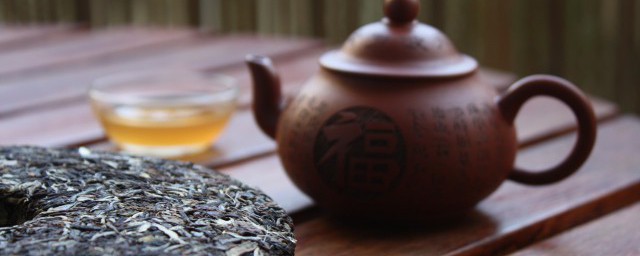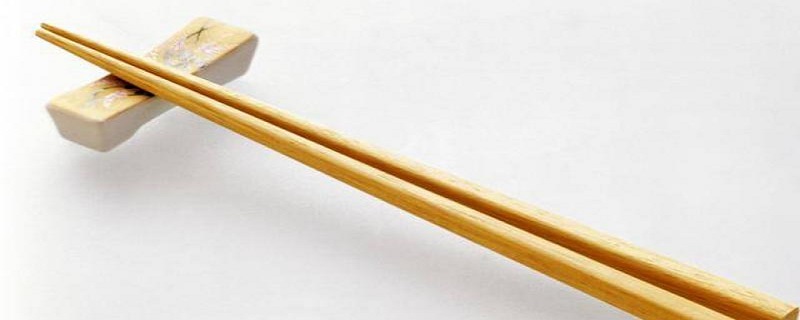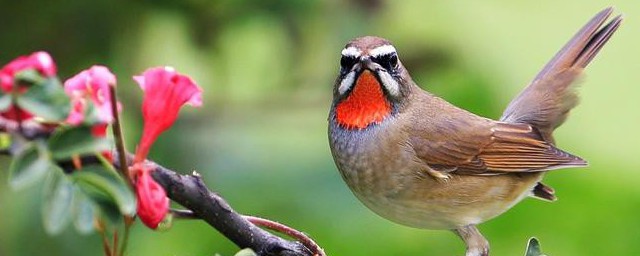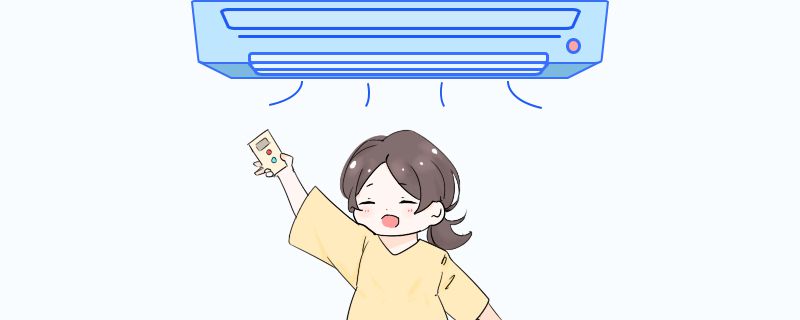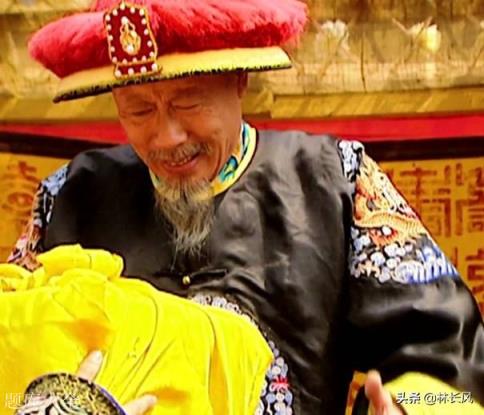北京景点用英语说
1、颐和园 the Summer Palace
2、故宫 the Imperial Palace
3、紫禁城 the Forbidden City
4、香山公园 Xiangshan Park
5、 *** 广场 Tian'anmen Square
6、人民英雄纪念碑 Monument of the People's Heroes
7、长城 the Great Wall
8、八达岭长城 Great Wall at Badaling or Badaling Great Wall
9、居庸关 Juyongguan Pass or Juyonguan Great Wall
扩展资料:
北京是全球拥有世界遗产(7处)最多的城市,是全球首个拥有世界地质公园的首都城市。
北京十大景点英文介绍
北京是中国“四大古都”之一,拥有6项世界级遗产,是世界上拥有文化遗产项目数最多的城市,北京是一座有着三千余年建城历史、八百六十余年建都史的历史文化名城,拥有众多历史名胜古迹和人文景观。下面是我整理的北京十大景点英文,希望大家能喜欢!
北京十大景点英文介绍紫荆城Forbidden City ( the Imperial Palace )
北京是迅速发展着的首都古城。紫荆城,作为揭开北京神秘面纱的理想出发点,可以让你开启一段品味历史的旅程。
Beijing is an old capital city developing at a fast pace. The Forbidden City is the ideal place for you to begin your exploration of Beijing by opening its mysterious face.
旅途小贴士:
由于路途比较远,选上一双舒适的鞋子尤其重要。最重要的是有一位导游,他可以为你解说一段不为人知的历史故事,如果你没有跟团,也可以在午门或者神武门那租一个多语言导游仪,可以在旅途结束后还回去。
Travel Tips:
Make sure to wear comfortable shoes as you have to walk a lot! I highly recommend you to have a guide. It is quite helpful to have a guide escort you and tell the stories behind the palace. If you are a non-group tourist, I suggest you rent a multi lingual guide recorder either at Meridian Gate (southern gate of Forbidden city) or the Gate of Divine Prowess (Northern gate of Forbidden City) and return it when you finish your Forbidden City Tour.
如何到达 How to get there:
地址Address: No.4 Jingshan Front Street, Dongcheng District
开放时间Opening Hour: 8:30-17:00
售票时间Ticket office hours: From 9: to 15:00 pm
行程Travel Time: Two hours Entrance
门票Fee: RMB 60
公交路线Buses to the Forbidden City: No. 1, 2, 4, 5, 10, 20, 52, 57, 22, 54, 120, 802, special bus No.1 and get off at Zhongshan Phongshan Park stop or Tiananmen stop. Take subway.
*** Tiananmen Square
北京更具代表性的地方有哪些?答案是各式各样的。但是 *** 广场无疑是首选之处,坐落在北京核心地带,是大规模 *** 和 *** 的地方,它是世界上此类广场中更大的一个。
What is the most representative place in Beijing? The answers are various. But Tiananmen Square is unarguably on the top list. Lying in the heart of Beijing City, it is the place for massive parades and gathering. It boasts of the largest square of such kind in the world.
日出和日落时的升降旗仪式是很有看头的,年轻的仪仗队表现非常完美,更好提前三十分钟去,可以找个更佳的看旗方位。
At sunrise and sunset the raising and lowering ceremony of the Chinese National Flag is well worth seeing. The young troops perform very well. Make sure to be there 30 minutes earlier to get a good standing point.
如何到达How to get there:
Buses to Tiananmen:
Take No.1, 2, 4, 5, 10, 20, 52, 57, 22, 54, 120, 802, special bus No.1 and get off Zhongshan Park stop or Tian An Men stop. Take subway.
门票和时间Ticket fees and tour time:
*** 广场Tiananmen Square: Free
*** Tiananmen (Gate of Heavenly Peace): RMB 15
人民大会堂The Great Hall of the People: RMB 15
毛主席纪念堂Chairman Mao's Mausoleum: Free
中国国家博物馆The National Museum of China: RMB 15
开放时间Opening Time (Tiananmen Square): Whole Day
旅程Travelling time: 2-4 hours
More information:
http://www.chinahighlights.com/beijing/tours.htm
Ming Tombs ( 13 tombs in Ming Dynasty )
明十三陵
位于北京市中心西北方向50公里,又称作明十三陵,明代(1368-1644)17个皇帝中有13个安葬在这里。
Located 50 kilometers northwest of the downtown Beijing, noted as the 13 Tombs, this is the burial area of 13 out of 17 emperors of the Ming Dynasty, the ruling dynasty of China from 1368 to 1644.
然而,地下墓地很深,有心脏和关节问题的人群不建议游览地下墓地。使用轮椅或行动不便的人群,建议游览长陵墓。
However, it is a very deep climb down and people with problems of their heart or kneels are not advised to visit the underground tomb. Wheel-chair users or people with some difficulty of action, I advise them to visit the Changling Tomb instead.
如何到达How to go there:
旅程Travel Time: 2 hours
旅游巴士路线Tourist Bus Route: 1, 2, 3, 4, 5 门票Ticket Fees as below:
长陵墓Changling Tomb: RMB 30 (Nov.01 to Mar.31) / RMB 45 (Apr.01 to Oct.31)
定陵墓Dingling Tomb: RMB 40 (Nov.1 to Mar.31) / RMB 60 (Apr.1 to Oct.31)
开放时间Opening Time:
长陵墓Changling Tomb: 08:30 to 17:30
定陵墓Dingling Tomb: 08:30 to 18:00
Click here to know more:
http://www.chinahighlights.com/beijing/top-things-to-do.htm
Hutong Pedicab Tour ( Shichahai Area )
三轮车胡同游
想体验一把人拉三轮车吗?在今天保留依旧完好的北京胡同里,你就感受到这种北京胡同所特有的古老交通工具所带来的新奇体验。
Do you want to experience a man-driving Pedicab? In today's well preserved old Beijing hutong areas, you can still find this kind of old transportation tool now still kept for tourists as the typical traffic tool of travelling the hutong - Beijing featuring old city alleys.
沿着狭窄蜿蜒的街道居住着代表最普通北京人的邻里,窄小的通道串连起传统的家庭庭院。
The neighbourhoods of narrow, twisting streets represent the real life of ordinary Beijingers, where passageways - *** all narrow ways link to courtyards of traditional connected homes.
如何到达How to go there:
Two Areas for Hutong Exploring:
什刹海地区Shichahai Area: north of Beihai Park
大栅栏地区Dazhalan Area: south of Tiananmen Square
三轮车Rickshaw: RMB 50-100
Great Wall at Badaling, Juyongguan, Mutianyu, Simatai and Jinshanling
长城:八达岭,居庸关,慕田峪,司马台和金山岭
不到长城非好汉,长城北边主要有8大关组成: 八达岭,居庸关,黄花城,箭扣,慕田峪,古北口,金山岭和司马台。长城大部分关口都保留完好,大修整时期可追溯到明朝。
Climbing the Great Wall is a must for you no matter how busy you are! In Beijing there are mainly eight sections of the Great Wall crossing the northern part of Beijing for 600 kms. The eight sections are Badaling, Juyongguan, Huanghuacheng, Jiankou, Mutianyu, Gubeikou, Jinshanling, and Simatai. Most of the sections of the Great Wall in Beijing are well-preserved and mainly the relics dating from the Ming Dynasty, the time for huge construction.
攀长城,需要准备一双好鞋。天气热时,也要准备防晒霜,太阳镜和水。天气冷时,记得带上帽子和大衣。
For the Great Wall hiking, get ready for strong footwear. For hot weather, please also prepare for sunblock, sunglasses and water. For cold days, get ready for your hat and heavy coat.
八达岭Badaling Great Wall:
门票Ticket Fees: RMB40 (Nov. 01 to
Mar.31); RMB 45 (Apr. 01 to Oct. 31)
开放时间Open Hours: 06:40 to 18:30
旅程HikeTime: 2.5 hours
如何到达How to go there:
Take Bus 919. Or take a tourist bus:
No. 1 at Front Gate ( Qianmen );
No. 2 at Beijing Railway Station;
No. 3 at East Bridge;
No. 4 at Xi Gate or Beijing Zoo;
居庸关Juyongguan Great Wall:
门票Ticket Fee: RMB 45
开放时间Open Hours: 07:30 to 17:30
旅途用时Hike Time : 2.5 hours
如何到达How to go there:
乘坐观光车Take tourist Bus Route as below:
Take No. 1 at Front Gate ( Qianmen )
Take No. 2 at Beijing Railway Station
Take No. 3 at East Bridge
Take No. 4 at Beijing Zoo or Ximen Gate
慕田峪Mutianyu Great Wall:
门票Ticket Fee: RMB35
开发时间Open Hours: 07:30 to 17:30
旅途Hike Time: 2.5 hours
如何到达How to go there: Take Bus no 916 or take tourist Bus No. 6 at Xuanwumen Gate
司马台Simatai Great Wall:
门票Ticket Fee: RMB 35
开放时间Open Hours: 08:00 to 17:00
旅程Hike Time: 2 hours
如何到达How to go there:
Take bus No.12 from Xuan Wu Gate directly to Simatai.
Take the 970 bus out of Beijing to Miyun and hire a taxi from there.
金山岭Jinshanling Great Wall:
门票Entrance Fee: RMB 30
开放时间Opening Hours: 08:00 to 16:50
旅程Hiking time: 2 hours
如何到达How to go there
Take the 970 bus out of Beijing to Miyun and hire a taxi from there.
Lama Temple (Yonghegong)
喇嘛庙
喇嘛庙是北京大家最常光顾的宗教场所。主要由五个主要展馆和许多画廊组成。这座寺庙最初是作为王子的宫殿。当他获得了王位,就把它献给 *** 佛教作为传教的宗教圣地。喇嘛庙是佛教专门的黄教。实际上是益教,有许多忠实的信徒烧香拜祭。
Lama Temple is Beijing's most frequented religious place. It is comprised of five main halls and many galleries. This temple was first the palace offered to a prince. When he gained the throne, he offered it to the Tibetan Buddhists as the religious sacred place. The Lama Temple is dedicated to the Yellow Sect of Buddhi *** . It is actually an active temple, with many faithful belivers with burning armloads of incense.
如何到达
How to go there:
地址Address: No.13 Imperial College Stree, Dongcheng District, Beijing
乘地铁或公交Take subway or No.62, 13, 116 and special 2 bus and get off at Lama Temple
开放时间Open Time: 09:00-16:30
旅程Travel Time: 1.5 hours
门票Ticket Fee: RMB 20
Beihai Park ( Winter Palace )
北海公园
北海公园曾是皇帝的圆明园。它位于紫禁城以西北。其中很多东西可看,但有两样是不能错过的:园区本身和圆城。圆城有一个罐子,被认为是大可汗在统治元朝时(公元1279-1368)唯一留下的物品。
Beihai Park was once a winter palace for emperors in the past. It is located just to the north-west of Forbidden City. Among many things to see, there are now two important things not to be missed here: the park itself and the round city. The round city has a jar, which is believed to be the only thing left from the great Khan that reigned China in Yuan Dynasty (1279-1368 A.D).
您可以租用划艇和划船在水面上游玩。北海公园有趣的景点有:圆城,白塔,玉花岛,九龙墙,万佛楼塔,铁网等。该湖是北京更大和最漂亮的公共湖泊。
You can hire a rowboat and row the boat on the water. The interesting attractions in Beihai Park are Round City, White Pagoda, Jade Flower Island, Nine-Dragon Wall, Wanfo Lou Tower, Iron Screen etc. The lake is Beijing's biggest and prettiest public lake.
如何到达How to go there:
Wen Jin Street (northwest of the Forbidden City)
开放时间Open Time: 09:00-16:30
旅程Travel Time: 2 hours
从南门From the South Gate: 101、103、109、812、814、846
从北门From the North Gate: 107、111、118、701、823
从东门From the East Gate: 5
Beijing Capital Museum
北京首都博物馆
来北京旅游,如果没有参观北京博物馆,旅游是不完整的。城市周围点缀着很多博物馆。如果你没有太多的时间留在北京,你可以专注于参观首都博物馆。北京新首都博物馆现在是向公众开放,位于复兴门外大街,北京长安街西边。该博物馆是一座五层高的大厦,可容纳13个展览,可观展约5个小时,每人30元。
A trip to Beijing City is not complete without visiting its museums. There are a great number of museums dotting around the city. If you don't have much time available in Beijing, you can focus your museum tour to Beijing Capital Museum. Beijing's new Capital Museum is now open to the public, located on Fuxingmenwai Dajie, the western part of Beijing's Chang'an Jie. The museum is a five-storey mansion, catering for a maximum of 13 concurrent exhibitions, which can be seen in about 5 hours at the cost of 30 yuan per visitor.
如何到达
How to get:
URL:www.capitalmuseum.org.cn
*** Tel:010-63370491/92
开放时间Open Time: 09:00-16:30
旅程Travel Time: 1.5 hours
闭馆时间Black out date: Monday
地址ADD: Fuxingmenwai Dajie, Chang An Avenue
颐和园Summer Palace ( Yiheyuan )
被视为中国更大的皇家园林。北京的颐和园,其实是一个园林风格的皇家宫殿,蔓延至北京西北郊区10多平方英里外。
Regarded as the largest imperial garden in China, Beijing's Summer Palace is in fact a park-styled royal retreat extending out over 10 square miles in northwest suburban Beijing.
颐和园主要由万寿山和昆明湖组成。公园大部分被昆明湖覆盖。凭借精湛的设计,艺术架构与中国园林艺术相结合的亮点,颐和园赢得了“皇家园林博物馆”的美称。这是一个保存最完整,拥有优美的风景和大型紧凑建筑的皇家园林。圆明园于1998年被列为世界文化遗产。
Summer Palace is mainly comprised of Longevity Hill (Washoushan) and Kunming Lake. Much of the park is covered by Kunming Lake. With masterly design and artistic architecture integrating the highlight of Chinese garden arts, the Summer Palace has earned a title of "Royal Garden Museum". It is a royal garden most completely preserved with richest landscapes and large compact buildings. The Summer Palace was listed as the world cultural heritage in1998.
如何到达How to go there:
乘公交Take busses No.726, 826, 718, 332, 331 or 737 and get off at Yiheyuan Dongmen
: www.summerpalace-chin ***
地址Address: Yiheyuan (Summer Palace) Road, Haidian District 62881144-209
开放时间Open Time: 6:30-20:30
门票Ticket Fee: RMB 40 (low season) / RMB 50 (peak season)
天坛Temple of Heaven ( Tiantan )
天坛是北京真正的亮点之一。它坐落在北京南面。五个世纪以来,一直是最神圣的国家遗址之一。在明清时期,它主要是祭祀朝拜的圣地。
Temple of Heaven is one of the real highlights of Beijing. It is situated in the southern Beijing City. It has been one of the most sacred sites for the whole country for the past five centuries. It worked as sacrificial compound buildings for the Ming and Qing emperors.
如果你在清晨走进天坛,你可以看到很多人在做晨练,各种功夫和太极,还有很多人在伴着音乐唱歌,玩牌。你也可以加入他们。
天坛最亮点的部分是独特的百年老树,一些翠柏已经有600岁了!
What's the intriguing by-proction of the temple is that if you enter the Temple of Heaven in the early morning, you can find many people doing all types of kung fu and taiji and other morning exercises. Furthermore, many people happily play each other with music, songs or cards. You can also join them if you want. The most highlight part of the temple is the unique century-old trees. Some of the cypresses are over 600 years old! When once visiting the temple, Dr Henry Kissinger, said that the USA could rebuild the Temple of Heaven if it wanted, but it could not proce the trees!
如何到达How to go there:
Take 6, 20, 39 Buses
地址Address: on the east of Tianqiao, Chongwen District 67018866
开放时间Open Time: 6:00-21:00
旅程Tour Time: 1.5 hours
门票Ticket Fee: RMB 35
北京英文介绍Beijing, Capital of china
Beijing is a city where the old cultural traditions and the modern civilization are well integrated. Each year thousands of visitors and tourists come to Beijing to enjoy and feel its unique culture and scenery.
Beijing is endowed with rare cultural heritage e to its long history. The Great Wall, one of the world wonders and the sole man-made architecture which can be seen from space, extends several hundred miles in Beijing. The poetic and picturesque Summer Palace is the classic works of the feudal dynasty garden. The Forbidden City is the most splendid group of imperial palace in the world. The temple of heaven is the place of worship for emperors of various dynasties of China as well as a splendid achievement of the Chinese ancient architectural art. The above four have been selected by the United Nations organization of ecation, Science and Culture as the world cultural heritage. What is typical of Beijing is hutong and the compound courtyard (old Beijing residential quarters), which are now disappearing. These streets and buildings witnessed ups and downs of the city and the people in the past centuries and are a typical symbol of the life of Beijing people.
Changes have taken place day by day in Beijing since China's reform and opening to the outside world is being deepened. As a popular saying goes around here, Beijing is growing taller with more and more high buildings younger with the people's life richer and more colorful. Beijing is advancing more rapidly with full confidence in the 21st century.
This is Beijing, old and young, full of attraction. It is our sincere hope that you will make best of your time here to visit more places and enjoy more scenery and we believe you will harvest a lot.
History
Beijing in Chinese means "capital in the north". Its establishment could be traced back to more than 3000 years ago. From 1272 to 1911, Beijing was the capital of Yuan, Ming and Qing Dynasties. After the People's Republic of China was founded in 1949, Beijing is the capital of new China.
北京的所有旅游景点的英文
所有也太多了 以下参考吧
长城 The Great Wall
故宫 The Palace Museum(TheForbidden City)
人民大会堂 Great Hall of the people
颐和园 The Summer Palace
香山 The Fragrant Hill
*** 广场 Tian An Men Square
人民英雄纪念碑 Monument to the People's heroes
毛主席纪念堂 The Memorial Hall of Chairman Mao
天坛 The Temple of Heaven
雍和宫 Lama Temple
亚运村 Asian Games Village
圆明园 Garden of Gardens
民族文化宫 The Nationalities Cultural Palace
十三陵 The Ming Tombs
首都体育馆 The Capital Gymnasium
中国人民历史博物馆 Museum of Chinese History and the Chinese Revolution
中国人民歌名军事博物馆 Military Museum of the Chinese People's Revolution
农业展览馆 The Agriculture Exhibition Hall
中国美术馆 The Chinese Art Gallery
卢沟桥 Marco Polo Bridge(Lugou bridge)
中华世纪坛 China Millennium Monument
紫檀博物馆 China red sandalwood museum
北京景点用英语怎么说
问题一:北京的著名景点的都有哪些,用英文怎么说 1、之一类:
*** 及广场(东城区)
故宫(东城区)
天坛(崇文区)
颐和园(海淀区)
圆明园(海淀区)
北海(西城区)
景山(西城区)
十三陵(昌平区)
芦沟桥(丰台区)
人民大会堂(西城区)
八达岭长城(延庆县)
居庸关长城(延庆县)
2、第二类:
中山公园(西城区)
劳动人民文化宫(东城区)
香山、碧云寺(海淀区)
八大处(石景山区)
植物园、卧佛寺(海淀区)
司马台长城(密云县)
慕田峪长城(怀柔区)
什刹海(西城区)
钟鼓楼(东城区)
雍和宫(东城区)
孔庙、国子监(东城区)
地坛(东城区)
德胜门箭楼(西城区)
东南角楼及明城垣遗址(崇文区)
正阳门城楼及箭楼(崇文区)
琉璃厂文化街(宣武区)
大栅栏商业街(宣武区)
潭柘寺(门头沟区)
北京动物园(西城区)
皇城根遗址(东城区)
首都博物馆(西城区)
北京欢乐谷(朝阳区)
3、第三类:
古观象台(东城区)
月坛(西城区)
梅兰芳故居(西城区)
程砚秋故居(西城区)
郭沫若故居(西城区)
大观园(宣武区)
法源寺(宣武区)
天宁寺塔(宣武区)
日坛(朝阳区)
西山大觉寺(海淀区)
五塔寺(西城区)
纪晓岚故居(宣武区)
北大红楼(东城区)
段祺瑞执 *** 旧址(东城区)
茅盾故居(东城区)
老舍故居(东城区)
银山塔林(昌平区)
东灵山(门头沟区)
十渡(房山区)
云居寺(房山区)
戒台寺(门头沟区)
广济寺(西城区)
白塔寺(西城区)
历代帝王庙(西城区)
西什库教堂(西城区)
八面槽教堂(东城区)
牛街礼拜寺(宣武区)
菖蒲河公园(东城区)
周口店北京人遗址(房山区)
陶然亭公园(宣武区)
北京游乐园(崇文区)
石景山游乐园(石景山区)
法海寺(石景山区)
4、第四类:
先农坛观耕台(宣武区)
崇效寺藏经阁(宣武区)
龙潭湖(崇文区)
袁崇焕祠(崇文区)
文天祥祠(东城区)
宣武门教堂(西城区)
西直门教堂(西城区)
报国寺、顾炎武故居(宣武区)
湖广会馆(宣武区)
康有为故居(宣武区)
青龙桥火车站(延庆县)
箭扣长城(怀柔县)
凤凰岭(海淀区)
妙峰山(门头沟区)
智化寺(东城区)
广化寺(西城区)
利玛窦墓(西城区)
玉渊潭(海淀区)
莲花池(丰台区)
宛平城(丰台区)
辽金水关遗址(丰台区)
大葆台汉墓(丰台区)
北京野生动物园(大兴区)
燃灯佛舍利塔(通州区)
银山塔林(昌平区)
5、第五类:
金海湖(平谷区)
宣武公园(宣武区)
北土城、西土城(海淀区、朝阳区)
人定湖公园(朝阳区)
朝阳公园(朝阳区)
日坛(朝阳区)
永定门城楼(崇文区)
龙庆峡(延庆县)
古崖居(延庆县)
石花洞(房山区)
中央电视塔(海淀区)
番字牌石刻(密云县)
巩华城(昌平区)
南海子麋鹿苑(大兴区)
鹫峰(海淀区)
百望山森林公园(海淀区)
八达岭残长城(延庆县)
黄花城长城(怀柔区)
德寿堂药店(宣武区)
京报馆(宣武区)
将军关长城(平谷区)
卧虎山长城、蟠龙山长城(密云县)
密云水库(密云县)
沿河城(门头沟区)
航空博物馆(昌平区)...>>
问题二:北京的所有旅游景点的英文 所有也太多了 以下参考吧
长城 The Great Wall
故宫 The Palace Museum(TheForbidden City)
人民大会堂 Great Hall of the people
颐和园 The Summer Palace
香山 The Fragrant Hill
*** 广场 Tian An Men Square
人民英雄纪念碑 Monument to the People's heroes
毛主席纪念堂 The Memorial Hall of Chairman Mao
天坛 The Temple of Heaven
雍和宫 Lama Temple
亚运村 Asian Games Village
圆明园 Garden of Gardens
民族文化宫 The Nationalities Cultural Palace
十三陵 The Ming Tombs
首都体育馆 The Capital Gymnasium
中国人民历史博物馆 Museum of Chinese History and the Chinese Revolution
中国人民歌名军事博物馆 Military Museum of the Chinese People's Revolution
农业展览馆 The Agriculture Exhibition Hall
中国美术馆 The Chinese Art Gallery
卢沟桥 Marco Polo Bridge(Lugou bridge)
中华世纪坛 China Millennium Monument
紫檀博物馆 China red sandalwood museum
问题三:北京的著名景点的都有哪些,用英文怎么说 北京的后海:Hou Hai, a lake in the middle of 础eijing, on the banks of which there are a lot of bars
蓝色港湾:SOLANA Lifestyle Shopping Park
三里屯酒吧一条街:BeiJing sanlitun Bar street
其他比较著名的景点一般都没啥可去的,老外一般爱去上面的几个时尚的地方。
问题四:北京旅游景点用英语介绍 你好!
北京旅游景点Tourist attractions in Beijing
问题五:北京是著名的旅游景点之一英语翻译 翻译:Beijing is one of the famous tourist attractions.
tourist attraction 游览胜地
attraction 英 [??tr?k?n] 美 [??tr?k??n]
n. 吸引; 魅力; [物]引力; 引人注意的东西,有趣的东西
问题六:北京名胜古迹的英文 *** 广场 Tiananmen and Tian`anmen Square
人民大会堂 the Great Hall of the People
人民英雄纪念碑 Monument to the People's Heros
革命历史博物馆 the Museum of Revolutionary History
毛主席纪念堂 Chairman Mao Zedong Memorial Hall
紫禁城 the Forbidden City
故宫 The Palace Museum
保和殿 the Hall of Preserving Harmony
中和殿 the Hall of Central Harmony
太和殿 the Hall of Supreme Harmony
乾清宫 Palace of Heavenly Purity
御花园 the Gate of Devine Might; the Imperial Garden
居庸关 Juyong Pass
八达岭长城 Great Wall at Badaling
慕田峪长城 Great Wall at Mutianyu
天坛 The Temple of Heaven
圜丘 the Circular Mound Altar
回音壁 Echo Wall
祈年殿 the Hall of Prayer for Good Harvest
地坛 The Temple of Earth
颐和园 The Summer Palace
明十三陵 The Ming Tombs
北海公园 Beihai Park
雍和宫 Yonghegong Larmasery
白云观 The White Cloud Taoist Temple
北京孔庙 Beijing Confucius Temple
国子监 The Imperial College
潭柘寺 Tanzhe Temple
圆明园 The Ruins of Yuanmingyuan
周口店北京猿人遗址 Peking Man Site at Zhoukoudian
中华民族园 Chinese Ethnic Culture Park
世界公园 Beijiang World Park
中华世纪坛 China Century Altar
清华大学 Tsinghua University
昆明湖 Kunming Lake
金水桥 the Golden Devine Might
神武门 the Gate of Devine Might
司马台 Simatai Fort
午门 the Meridian Gate
万寿山 Longevity Hill
北海公园 Beihai Park
紫金山天文台 Purple and Gold Hills Observation okky
周口店遗址 Zhoukoudian Ancient Site
少年宫 the Children's Palace
烽火台the Beacon Tower
清东陵 Eastern Royal Tombs of the Qing Dynasty
民族文化宫 the Cultural Palace for Nationalities
劳动人民文化宫 Working People's Cultural Palace...>>
求北京旅游地点英文名
1
万里长城 居庸关 Great Wall Juyongguan or Great Wall Juyonguan Pass 2
天坛Temple of Heaven 3
故宫 Imperial Palaces of the Ming and Qing Dynasties in Beijing and Shenyang(The Palace Museum) a
太和殿Hall of Supreme Harmony b
钟表馆Hall of Clock c
珍宝馆Hall of Jewwlry 4
胡同 四合院 人力车Hutongs Siheyuan Rickshaws (or rickshas) 5
王府井大街Wángfǔjǐng street 6
北海公园The Beihai Park 7
景山公园Jingshan Hill Park 8
十三陵Thirteen Tombs of the Ming Dynasty 9
同仁堂Tong Ren Tang,近年多称Tongrentang 10
*** 广场Tiananmen Square 11
人民英雄纪念碑The Monument to the People's Heroes 12
水立方The Beijing National Aquatics Centre also known as the Water Cube 13
鸟巢 The Beijing National Stadium1
万里长城 居庸关 The Great Wall Juyongquan 2
天坛 Temple of Heaven 3
故宫 a
太和殿 Palace Museum the Forbidden City b
钟表馆 c
珍宝馆 4
胡同 四合院 人力车 A Hutong Tour Rickshaw ride 5
王府井大街 Wang Fu Jing Shopping Area 6
北海公园 Bei Hai Park 7
景山公园 Jingshan Park 8
十三陵 The Ming Tombs 9
同仁堂 10
*** 广场 Tiananmen Square 11
人民英雄纪念碑 12
水立方 13
鸟巢参考: 自己
故宫,八达岭长城,北海公园,颐和园,圆明园的英文名
The
imperial
palace
故宫
Badaling
Great
Wall八达岭长城
Beihai
Park
or
the
North
Sea
Park北海公园
The
Summer
Palace
颐和园
yuanmingyuan
\
The
Old
Summer
Palace
\
Winter
Palace
\
Yuanmingyuan
Imperial
Garden(这个翻译多自己选一个)圆明园
北京景点介绍The Palace Museum
北京景点介绍The Palace Museum
导语:北京(Beijing),简称“京”,古称燕京、北平,是中华人民共和国的`首都、直辖市、国家中心城市、超大城市,国务院批复确定的中国政治中心、文化中心、国际交往中心、科技创新中心。下面是整理的北京景点介绍The Palace Museum,欢迎大家参考!
ThePalace Museum
What strikes one first in a birds -eye view of Beijing proper is a vast tract of golden roofs flashing brilliantly in the sun with purple walls occasionally emerging amid them and a stretch of luxuriant tree leaves flanking on each side. That is the former Imperial Palace, popularly known as the Forbidden City, from which twenty-four emperors of the Ming and Qing Dynasties ruled China for some 500 years--from1420 to 1911. The Ming Emperor Yong Le, who usurped the throne from his nephew and made Beijing the capital, ordered its construction, on which approximately 10,000 artists and a million workmen toiled for 14 years from 1406 to 1420. At present, the Palace is an elaborate museum that presents the largest and most complete ensemble of traditional architecture complex and more than 900,000 pieces of court treasures in all dynasties in China.
Located in the center of Beijing, the entire palace area, rectangular in shape and 72 hectares in size, is surrounded by walls ten meters high and a moat 52 meters wide. At each corner of the wall stands a watchtower with a double-eave roof covered with yellow glazed tiles.
The main buildings, the six great halls, one following the other, are set facing south along the central north-south axis from the Meridian Gate, the south entrance, to Shenwumen, the great gate piercing in the north wall. On either side of the palace are many comparatively *** all buildings. Symmetrically in the northeastern section lie the six Eastern Palaces and in the northwestern section the six Western Palaces. The Palace area is divided into two parts: the Outer Court and the Inner Palace. The former consists of the first three main halls, where the emperor received his courtiers and concted grand ceremonies, while the latter was the living quarters for the imperial residence. At the rear of the Inner Palace is the Imperial Garden where the emperor and his family sought recreation.
The main entrance to the Palace is the Meridian Gate(1), which was so named because the emperor considered himself the "Son of the Heaven" and the Palace the center of the universe, hence the north-south axis as the Meridian line going right through the Palace. The gate is crowned with five towers, commonly known as the Five-Phoenix Towers(2), which were installed with drums and bells. When the emperor went to the Temple of Heaven, bells were struck to mark this important occasion. When he went to the Ancestral Temple, it was the drums that were beaten to publicize the event.
Beyond the Meridian Gate unfolds a vast courtyard across which the Inner Golden Water River runs from east to west. The river is spanned by five bridges, which were supposed to be symbols of the five virtues preached by Confucius--benevolence, righteousness, rites, intelligence, and fidelity(3).
At the north end of the courtyard is a three-tiered white marble terrace, seven meters above the ground, on which, one after another, stand three majestic halls; the Hall of Supreme Harmony(4), the Hall of Complete Harmony(5), and the Hall of Preserving Harmony(6).
The Hall of Supreme Harmony, rectangular in shape, 27 meters in height, 2,300 square meters in area, is the grandest and most important hall in the Palace complex. It is also Chinas largest existing palace of wood structure and an outstanding example of brilliant color combinations. This hall used to be the throne hall for ceremonies which marked great occasions: the Winter Solstice, the Spring Festival, the emperors birthday and enthronement, and the dispatch of generals to battles, etc. On such occasions there would be an imperial guard of honor standing in front of the Hall that extended all the way to the Meridian gate.
On the north face of the hall in the center of four coiled-golden dragon columns is the "Golden Throne", which was carved out of sandalwood. The throne rests on a two-meter-high platform with a screen behind it. In front of it, to the left and right, stand ornamental cranes, incense burners and other ornaments. The dragon columns entwined with golden dragons measure one meter in diameter. The throne itself, the platform and the screen are all carved with dragon designs. High above the throne is a color-painted coffered ceiling which changes in shape from square to octagonal to circular as it ascends layer upon layer. The utmost central vault is carved with the gilded design of a dragon toying with pearls. when the Emperor mounted the throne, gold bells and jade chimes sounded from the gallery, and clouds of incense rose from the bronze cranes and tortoises and tripods outside the hall on the terrace. The aura of majesty created by the imposing architecture and solemn ritual were designed to keep the subjects of the "Son of the Heaven" in awe and reverence.
The Hall of Complete Harmony is *** aller and square with windows on all sides. Here the emperor rehearsed for ceremonies. It is followed by the Hall of Preserving Harmony in which banquets and imperial examinations were held.
Behind the Hall of Preserving Harmony lies a huge marble ramp with intertwining clouds and dragons carved in relief. The slab, about 6.5 meters long, 3 meters wide and 250 tons in weight, is placed between two flights of marble steps along which the emperors sedan was carried up or down the terrace. It is the largest piece of stone carving in the Imperial Palace. Quarried in the mountains scores of kilometers southwest of Beijing, this gigantic stone was moved to the city by sliding it over a specially paved ice road in winter. To provide enough water to build the ice road, wells were sunk at very 500 meters along the way.
The three halls of the Inner Palace are replicas of the three halls in the front, but *** aller in size. They are the Palace of Heavenly Purity(7), the Hall of Union(8), and the Palace of Earthly Tranquility(9).
The Palace of Heavenly Purity was once the residence of the Ming emperors and the first two of the Qing emperors. Then the Qing Emperor Yong Zheng moved his residence to the Palace of Mental Cultivation and turned it into an audience hall to receive foreign envoys and handled the state affairs. The promotion and demotion of officials were also decided in this hall. After the emperors death his coffin was placed here for a 49-day period of mourning.
The Palace of Union was the empresss throne room and the Hall of Earthly Tranquility, once a private living room for the empress, was partitioned. The west chamber served religious purposes and the east one was the bridal chamber where the newly married emperor and empress spent their first two nights after their wedding.
The Imperial Garden was laid out ring the early Ming dynasty. Hundreds of pines and cypresses offer shade while various flowers give colors to the garden all year round and fill the air with their fragrance. In he center of the garden is the Hall of Imperial Peace, a Daoist temple, with a flat roof slightly sloping down to the four eaves. This type of roof was rare in ancient Chinese architecture. In he northeastern corner of the garden is a rock hill, known as the Hill of the Piled-up Wonders, which is topped with a pavilion. At the foot of the hill are two fountains which jet two columns of water high into the air. It is said that on the ninth night of the ninth month of the lunar calendar, the empress would mound the hill to enjoy the autumn scene. It is also believed that climbing to a high place on that day would keep people safe from contagious diseases.
The six Western Palaces were residences for empresses and concubines. They are kept in their original way for show. The six Eastern Palaces were the residences for them too. But now they serve as special museums: the Museum of Bronze, the Museum of Porcelain and the Museum of Arts and Crafts of the Ming and Qing dynasties. In the northeastern-most section of the Inner Palace are the Museum of Traditional Chinese Paintings and the Museum of Jewelry and Treasures where rare pieces of imperial collections are on display.
Now the Forbidden City is no longer forbidding, but inviting. A visit to the Palace Museum will enrich the visitors knowledge of history, economy, politics, arts as well as architecture in ancient China.
Notes:
1. the Meridian Gate午门
2. the Five-Phoenix Towers五凤楼
3. benevolence, righteousness, rites, intelligence, and fidelity仁、义、礼、智、信
4. the Hall of Supreme Harmony太和殿
5. the Hall of Complete Harmony 中和殿
6. the Hall of Preserving Harmony 保和殿
7. the Palace of Heavenly Purity乾清宫
8. the Hall of Union交泰殿
9. the Palace of Earthly Tranquility坤宁宫 ;



